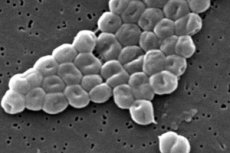New publications
Scientists plan to use bacteria to diagnose cancer
Last reviewed: 29.06.2025

All iLive content is medically reviewed or fact checked to ensure as much factual accuracy as possible.
We have strict sourcing guidelines and only link to reputable media sites, academic research institutions and, whenever possible, medically peer reviewed studies. Note that the numbers in parentheses ([1], [2], etc.) are clickable links to these studies.
If you feel that any of our content is inaccurate, out-of-date, or otherwise questionable, please select it and press Ctrl + Enter.

Special modified bacteria will be able to capture mutated DNA in the human gut cavity, which will further help in early cancer diagnosis.
It is known that any disease is better and easier to treat if it is diagnosed in time. Early detection of oncological diseases is the primary task of medical specialists, because, according to statistics, malignant tumors in most cases are detected at late stages of development, when they begin to show clear clinical signs.
When oncopathology is suspected, patients are tested for oncomarkers - special specific proteins/antigens formed in the blood. They are typical of certain types of malignant structures and appear as cancer cells increase in number. However, the detection of oncomarkers is not the most accurate method of diagnosis, because even in the norm these proteins and peptides are secreted by cells in small quantities, performing a variety of functions in the body. The method of detecting DNA from atypical cells may become more informative - they can be detected much earlier. Such a method is still under development, and DNA can be searched not only in the bloodstream, but also in urine and intestine.
Specialists from the University of California and the University of Adelaide have proposed to detect malignant DNA using bacteria. Many microbes have the ability to capture DNA and then incorporate it into their own genome. They pick up predominantly microbial DNA, but can also pay attention to other circulating similar molecules.
The DNA of malignant structures is distinguished from others by the presence of mutations. Scientists used Acinetobacter baylyi, changing it in such a way that it embeds into its own genome sections of someone else's DNA, which contains the KRAS mutation. This is about one of the most well-known oncogenes. It is with a mutation in KRAS starts most types of malignant processes, including colon cancer. The use of modifications made it possible to ensure that the bacteria embed in their genome only DNA with mutant KRAS, and do not touch DNA with normal KRAS.
During the incorporation of mutant DNA into the bacterium, the gene for resistance to the antibacterial drug Kanamycin is activated. For diagnosis, it will be enough to sow microbes from fecal masses on a nutrient medium with antibiotic. If there is no growth and multiplication of microbes, it means that the resistance they have not activated - that is, the mutant oncogene in them is absent. If growth has occurred, it means that there were cells with mutated KRAS in the intestine.
Specialists analyzed the action of "diagnostic" bacteria in rodent organisms. In all cases, the microbes correctly identified the beginning of the malignant process. Thanks to this method, it is possible to detect tumors at an early stage of their development, especially if there is a predisposition to oncopathologies. For example, such diagnosis will be useful if a person already has benign polyposis growths that can malignize. However, there is one disadvantage: not all organs can be targeted with modified microbes.
More information is available at science.org
